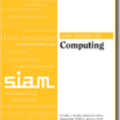In the parameterized $k$-clique problem, or $k$-Clique for short, we are given a graph $G$ and a parameter $k\ge 1$. The goal is to decide whether there exist $k$ vertices in $G$ that induce a complete subgraph (i.e., a $k$-clique). This problem plays a central role in the theory of parameterized intractability as one of the first W[1]-complete problems. Existing research has shown that even an FPT-approximation algorithm for $k$-Clique with arbitrary ratio does not exist, assuming the Gap-Exponential-Time Hypothesis (Gap-ETH) [Chalermsook et al., FOCS'17 and SICOMP]. However, whether this inapproximability result can be based on the standard assumption of $\mathrm{W} 1\ne \mathrm{FPT}$ remains unclear. The recent breakthrough of Bingkai Lin [STOC'21] and subsequent works by Karthik C.S. and Khot [CCC'22], and by Lin, Ren, Sun Wang [ICALP'22] give a technique that bypasses Gap-ETH, thus leading to the inapproximability ratio of $O(1)$ and $k^{o(1)}$ under $\mathrm{W}[1]$-hardness (the first two) and ETH (for the latter one). All the work along this line follows the framework developed by Lin, which starts from the $k$-vector-sum problem and requires some involved algebraic techniques. This paper presents an alternative framework for proving the W[1]-hardness of the $k^{o(1)}$-FPT-inapproximability of $k$-Clique. Using this framework, we obtain a gap-producing self-reduction of $k$-Clique without any intermediate algebraic problem. More precisely, we reduce from $(k,k-1)$-Gap Clique to $(q^k, q^{k-1})$-Gap Clique, for any function $q$ depending only on the parameter $k$, thus implying the $k^{o(1)}$-inapproximability result when $q$ is sufficiently large. Our proof is relatively simple and mostly combinatorial. At the core of our construction is a novel encoding of $k$-element subset stemming from the theory of "network coding" and a "Sidon set" representation of a graph.
翻译:暂无翻译


